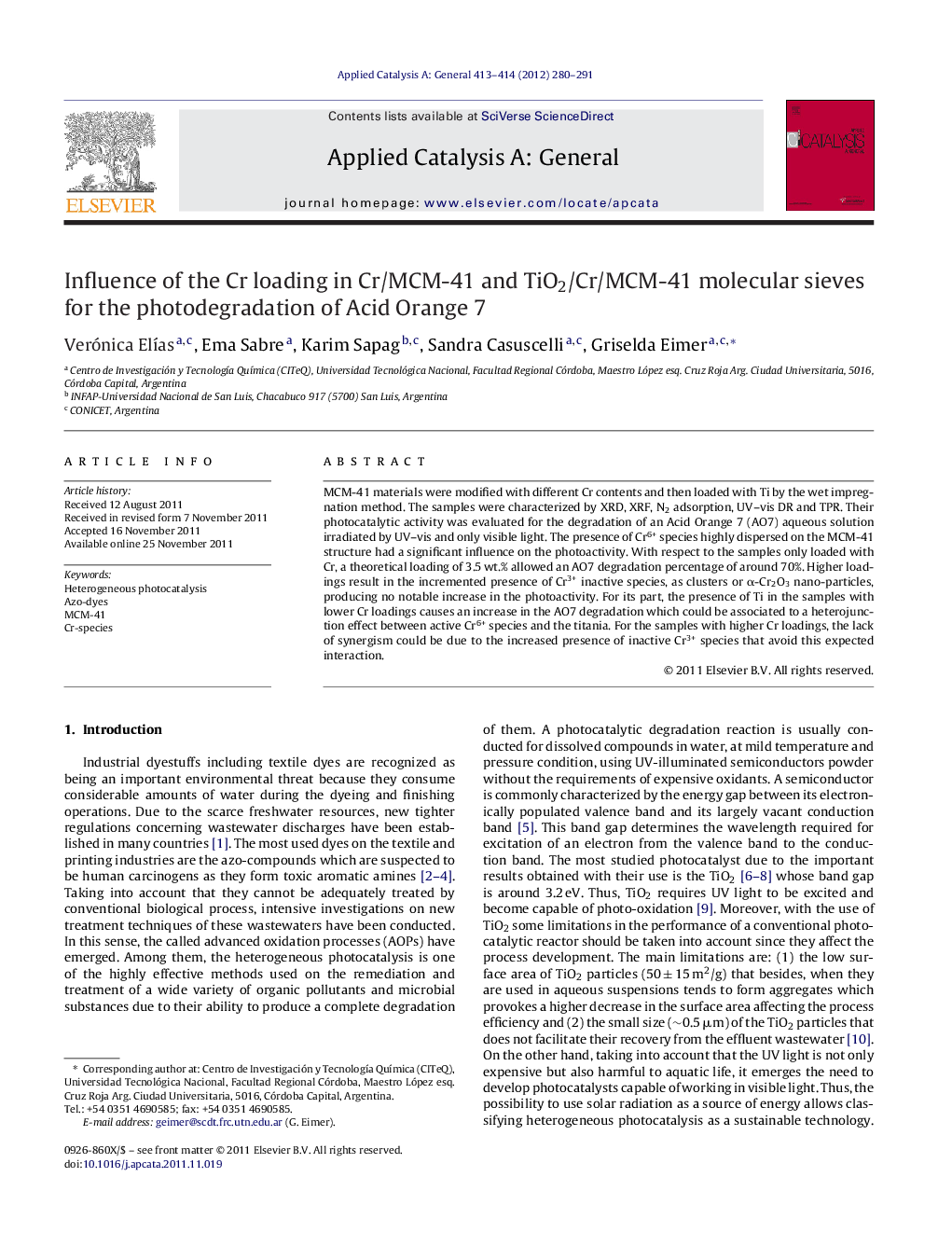| Article ID | Journal | Published Year | Pages | File Type |
|---|---|---|---|---|
| 41120 | Applied Catalysis A: General | 2012 | 12 Pages |
MCM-41 materials were modified with different Cr contents and then loaded with Ti by the wet impregnation method. The samples were characterized by XRD, XRF, N2 adsorption, UV–vis DR and TPR. Their photocatalytic activity was evaluated for the degradation of an Acid Orange 7 (AO7) aqueous solution irradiated by UV–vis and only visible light. The presence of Cr6+ species highly dispersed on the MCM-41 structure had a significant influence on the photoactivity. With respect to the samples only loaded with Cr, a theoretical loading of 3.5 wt.% allowed an AO7 degradation percentage of around 70%. Higher loadings result in the incremented presence of Cr3+ inactive species, as clusters or α-Cr2O3 nano-particles, producing no notable increase in the photoactivity. For its part, the presence of Ti in the samples with lower Cr loadings causes an increase in the AO7 degradation which could be associated to a heterojunction effect between active Cr6+ species and the titania. For the samples with higher Cr loadings, the lack of synergism could be due to the increased presence of inactive Cr3+ species that avoid this expected interaction.
Graphical abstractFigure optionsDownload full-size imageDownload high-quality image (103 K)Download as PowerPoint slideHighlights► MCM-41 materials were modified with different Cr loading and with Ti. ► High Cr loading results in the presence of inactive Cr3+ species. ► Cr6+ highly dispersed on MCM-41 is responsible for the azo-dyes photodegradation. ► A heterojunction effect between Cr6+ and Ti is observed for low Cr loading samples. ► The synergism between Cr6+ and Ti allows the (OH) formation and the AO7 degradation.
